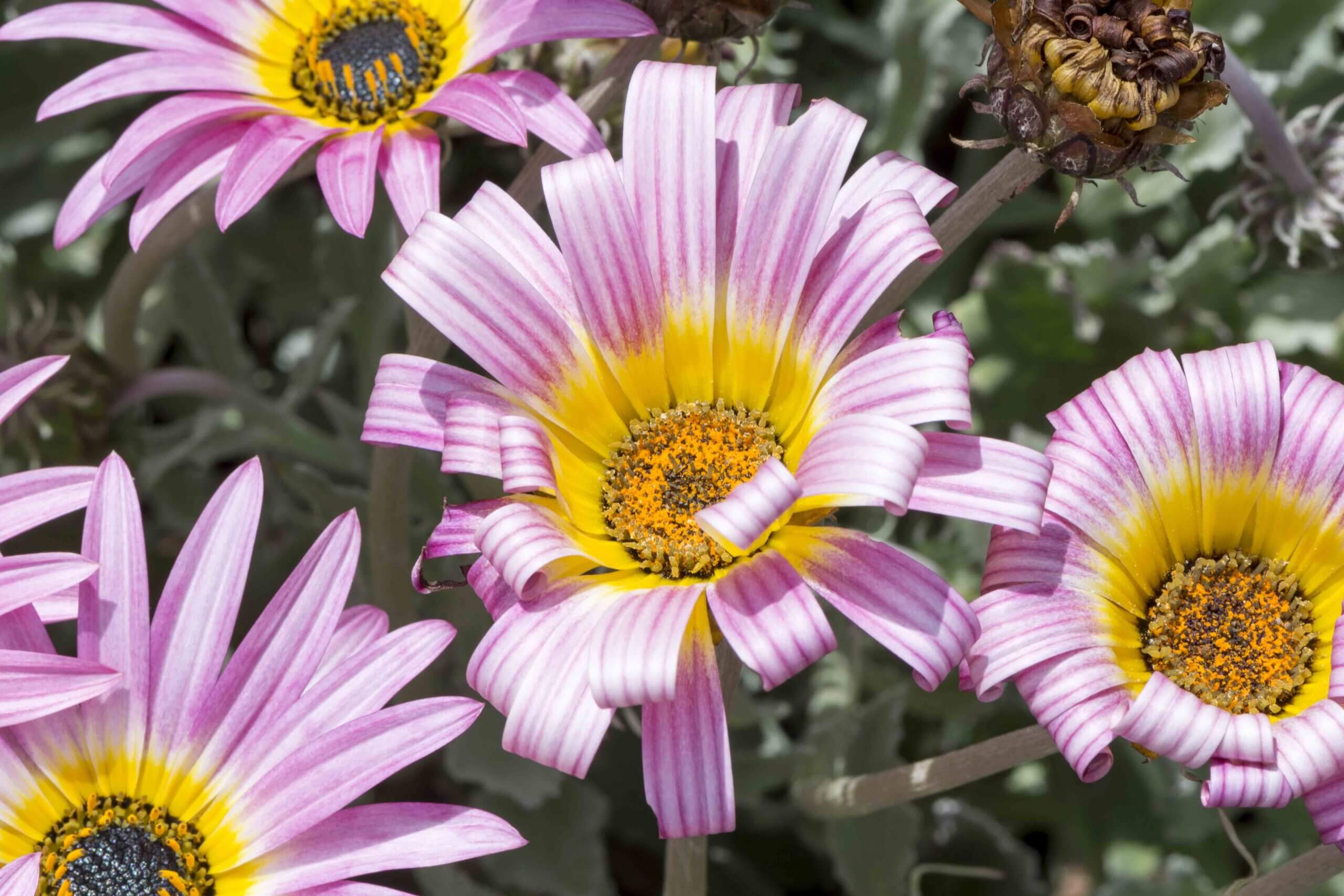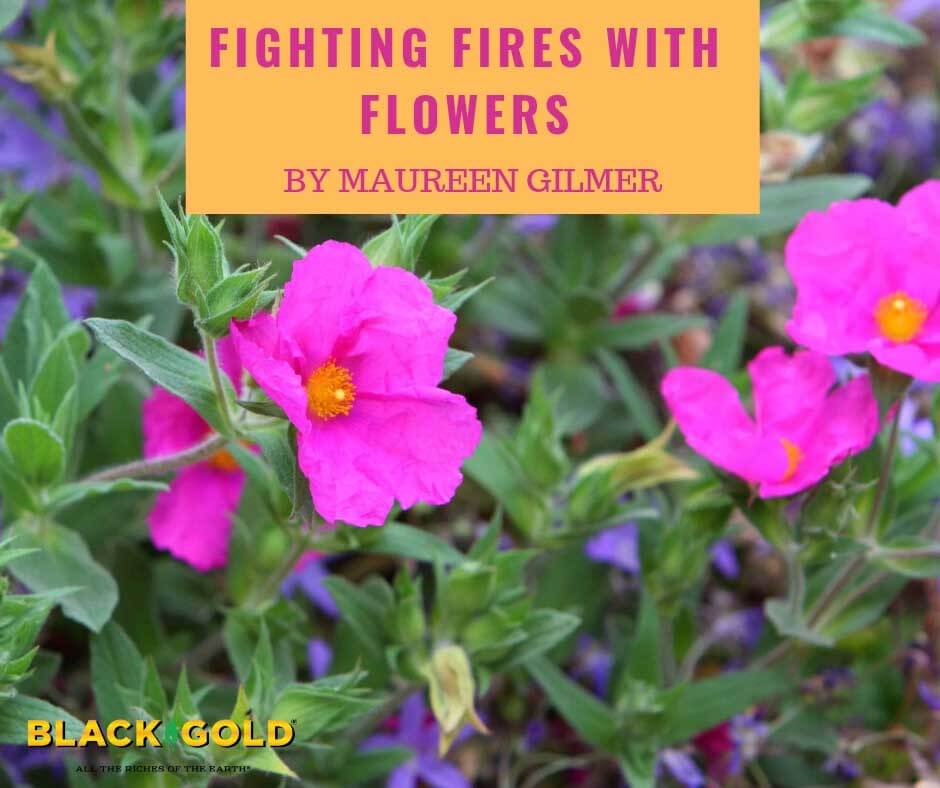
You can fight fires with flowers. When landscaping around high-fire-hazard homes, the key is to think about minimizing fire fuel volume, or the amount of burnable material that plants provide to oncoming fire. For example, a pine tree has a huge fuel mass, but a sage plant, with its lovely lavender-blue flowers, has negligible fuel mass.
To further understand the concept of fuel mass, imagine the plant on fire. The overall flame produced is roughly three times the plant’s height; the greater the overall mass and size, the greater the fuel volume. (Chemical composition also play a role in fire susceptibility. For example, creosote bush (Larrea tridentata) contains many resinous, volatile oils that are highly flammable.) This demonstrates the problem with woody trees and shrubs that are taller and have enormous fuel volumes.
Plants for Firescaping
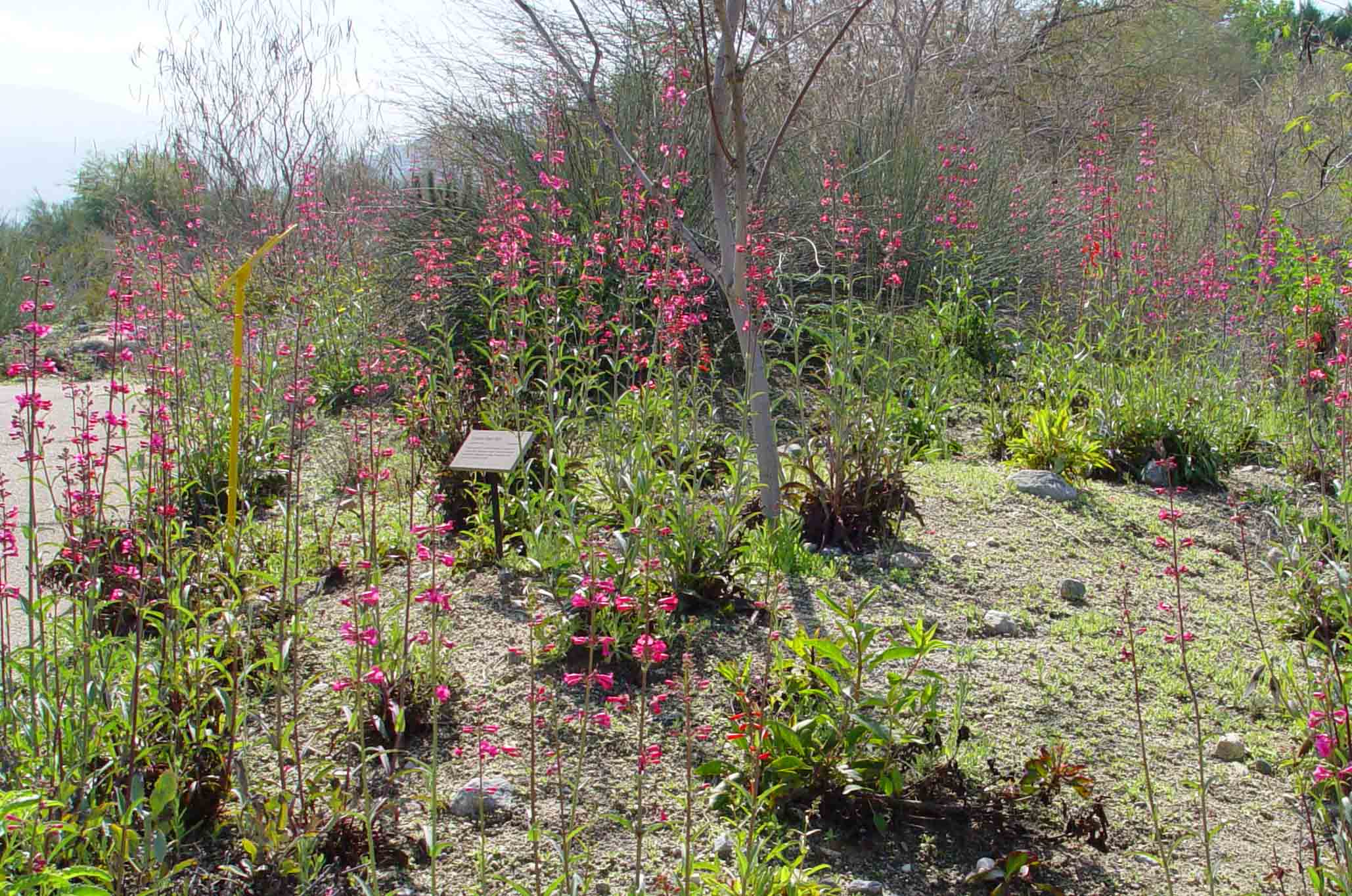
The good news is that annuals, perennials, biennials, and low-growing shrubs are all better landscape candidates for firescaping. Ornamentals below 2-feet in height are better choices for areas with fall or winter fire seasons. Early frosts often cut these plants back, or the heat of late summer makes them listless in the arid West. Many western natives are also fully dormant by fall, an adaptation that allows them to withstand the dry heat and drought of this season. Once the plants have died back, gardeners can cut them back to further reduce fuel mass around the home.
Some flowers are also fire resistant, but are these the best for the arid West? Scientific research has yielded data on plant fire susceptibility and fuel mass with simple testing. The tests are done by placing plant samples in a furnace and timing how long it takes for them to catch fire and burn. This makes no allowances for weather, wind, and topography, so in a real fire situation, the test results may be deceiving. All plants burn in catastrophic wildfires. The ” fire-resistant” plants may simply ignite a second or two later than non-fire-resistant plants, so gardeners should not worry about just planting fire-resistant plants.
The key is choosing drought-tolerant landscape plants that also have a low fuel volume. What you can grow locally is dictated by your rainfall and winter cold. You must choose plants adapted to your growing region. Every elevation and geographic area will have its own list of suitable native and non-native herbaceous flowers and subshrubs that fulfill both the fuel height and drought requirements.
Select Flowers for Firescaping
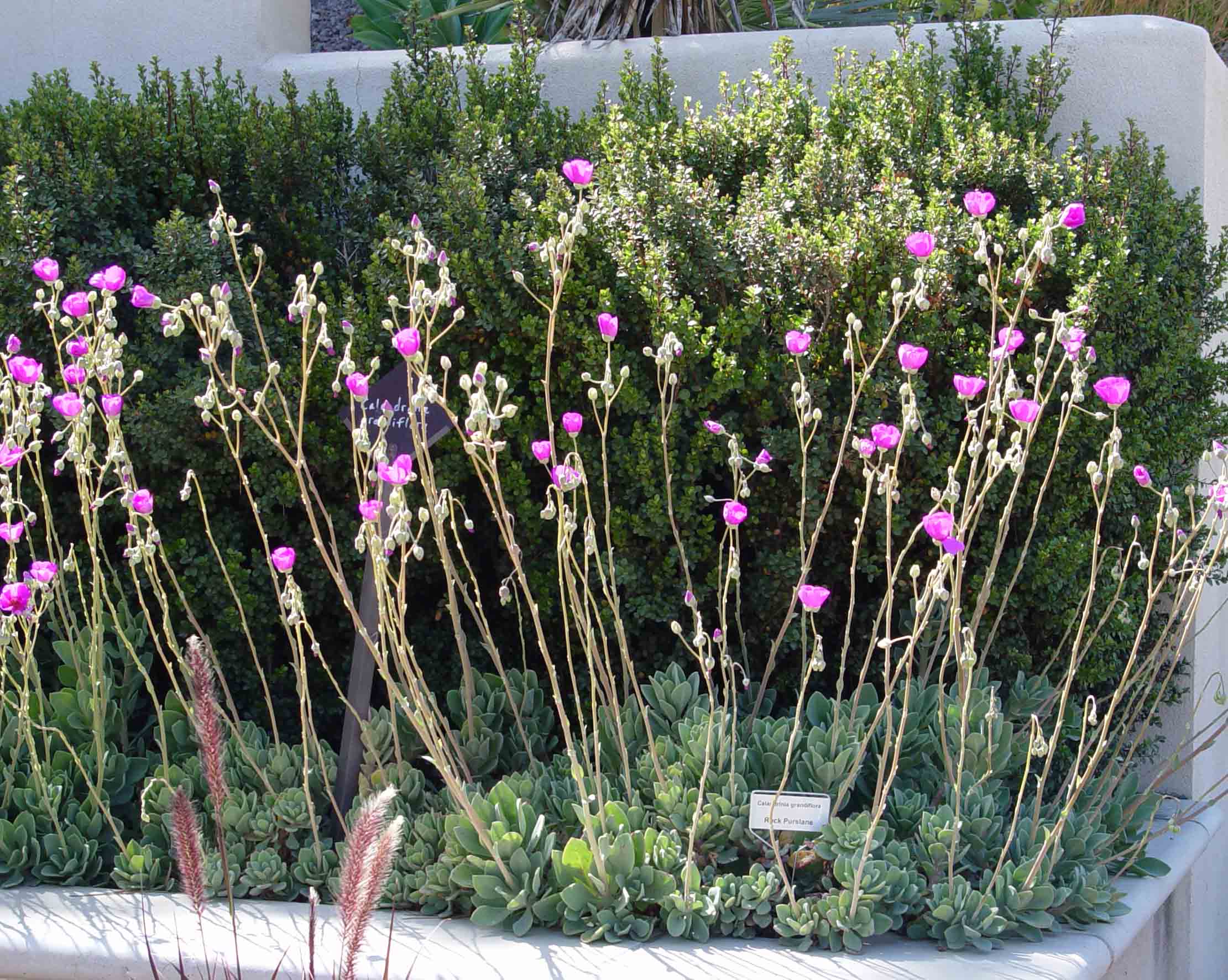
Drought resistant, low-fuel-volume flowering landscape perennials:
Botanical Name Common Name USDA Zone Color
Achillea tomentosa Wooly Yarrow 3-8 Yellow
Arctotis hybrids Cape Daisy 9-11 Many
Cistanthe grandiflora Rock Purslane 8-11 Magenta
Cistus ‘Brilliancy’ Rock Rose 8-11 Magenta
Penstemon spp. Penstemon Varies Varies
Rosmarinus ‘Prostratus’ Rosemary 7-10 Lavender
Santolina spp. Lavender Cotton 6-10 Yellow
These are just a few select perennials for starters. Any of these will grow best with drip irrigation in the arid West. You might also plant spring bulbs and wildflowers, which are already naturally adapted to survive fire due to their seasonality; they bloom and grow in the low-fire season. Succulents are also recommended because they contain so much water, they rarely burn. In wetter areas, low fuel volume options include bearded iris (Iris hybrids), sea thrift (Armeria maritima), and many other beauties.
To boost flower production in your newly planted low-fuel-volume flowers this year, generously work Black Gold Garden Compost Blend or Just Coir into the soil to increase water holding capacity, drainage, and fertility. This superior growing amendment is also OMRI Listed for organic gardening.
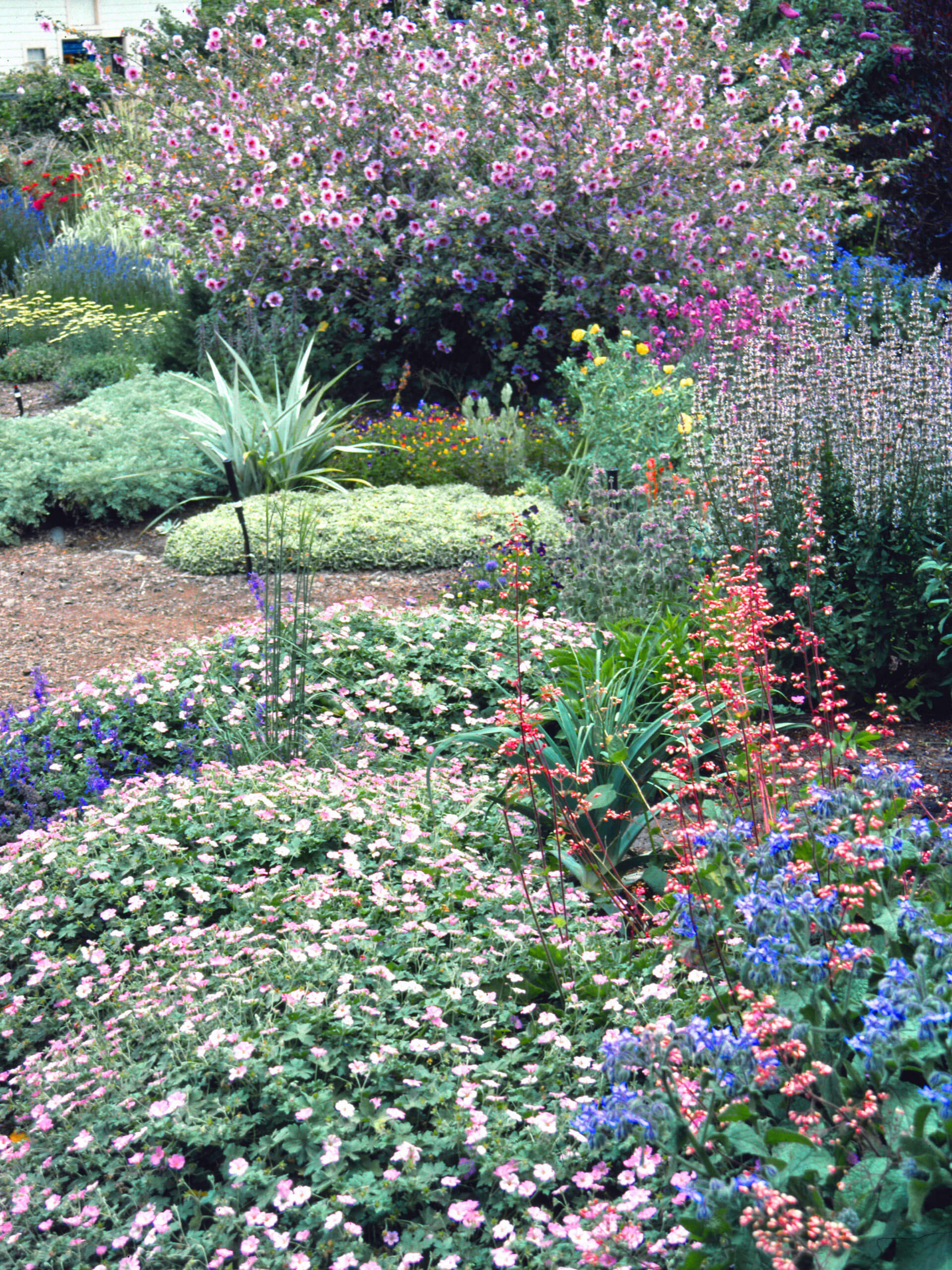
Planting to Reduce Fire
The commonly used term for firescaping, “planting for fire”, is actually an oxymoron. It should be “planting to reduce fire”. The less fuel there is, the safer you are, but homeowners in high fire zones should not be afraid to have beautifully landscaped gardens. Human beings want beautiful home landscapes with diversity and color, so the hyper-safe fuel-free parking lot approach is not appealing to anyone. Instead, think it through yourself, select wisely chosen low-fuel plants, then start flower gardening in your high-fire zone today.
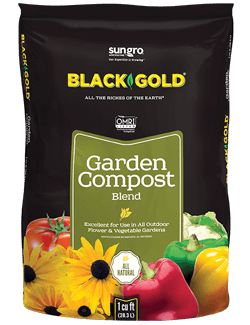 The final caveat is what’s lying on the ground. Thick leaf litter and duff ignites quickly from embers, then smolders for many days afterward. So, another key to fire survival is managing the property so these organic accumulations remain thin or absent. You can also reduce unnecessary top growth. Cutting back plants at the start of fire season should be an annual ritual for reducing overall fuel loads.
The final caveat is what’s lying on the ground. Thick leaf litter and duff ignites quickly from embers, then smolders for many days afterward. So, another key to fire survival is managing the property so these organic accumulations remain thin or absent. You can also reduce unnecessary top growth. Cutting back plants at the start of fire season should be an annual ritual for reducing overall fuel loads.
There are no easy answers to the new wind-driven fires in the American West, and the future is uncertain. What we can do is realize that survival can rest in your landscape. Plant the flowers you love, explore new plant discoveries, and choose anything else with low fuel volume, so you are ready to fight fires after the flowers bloom.
